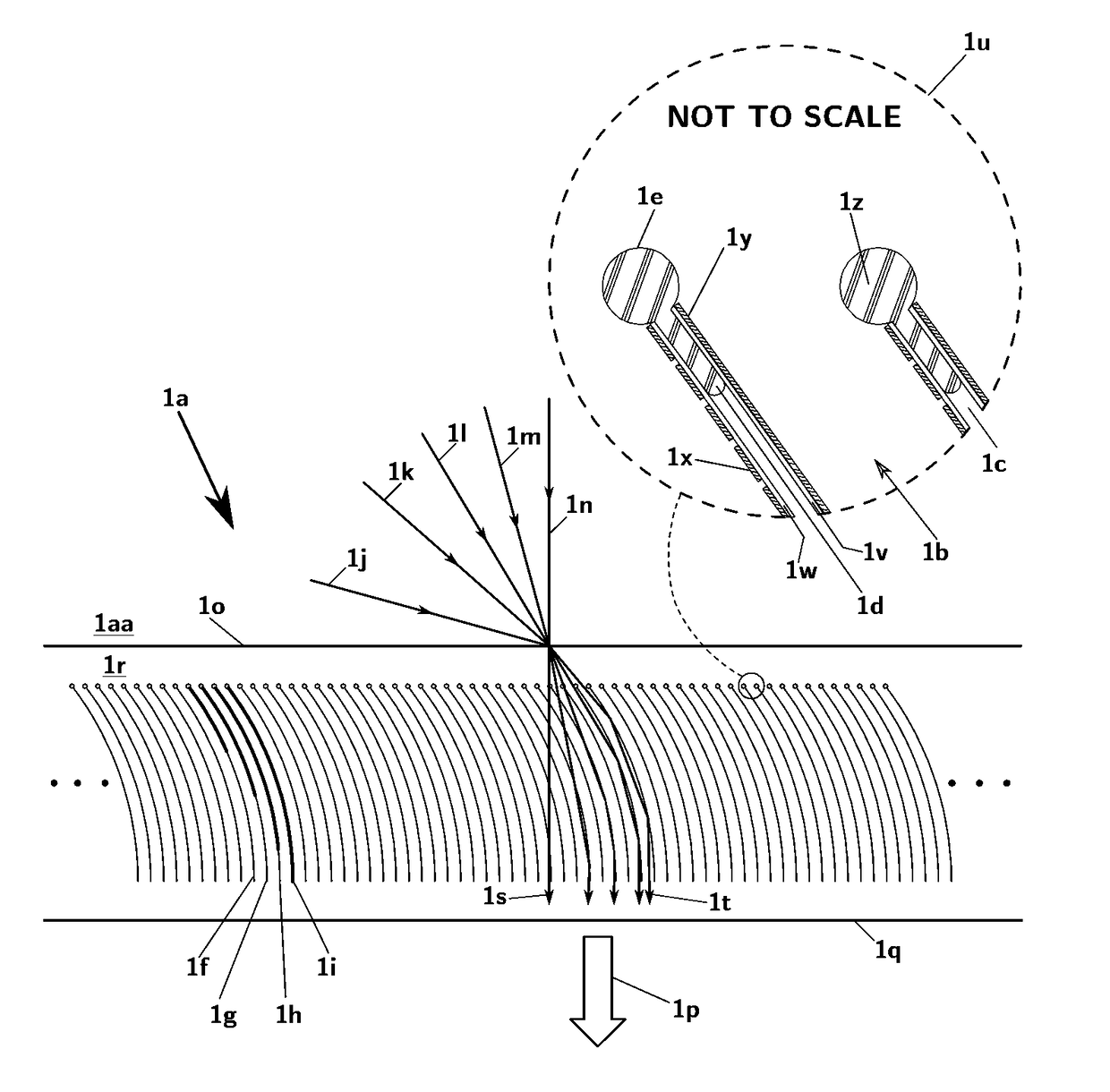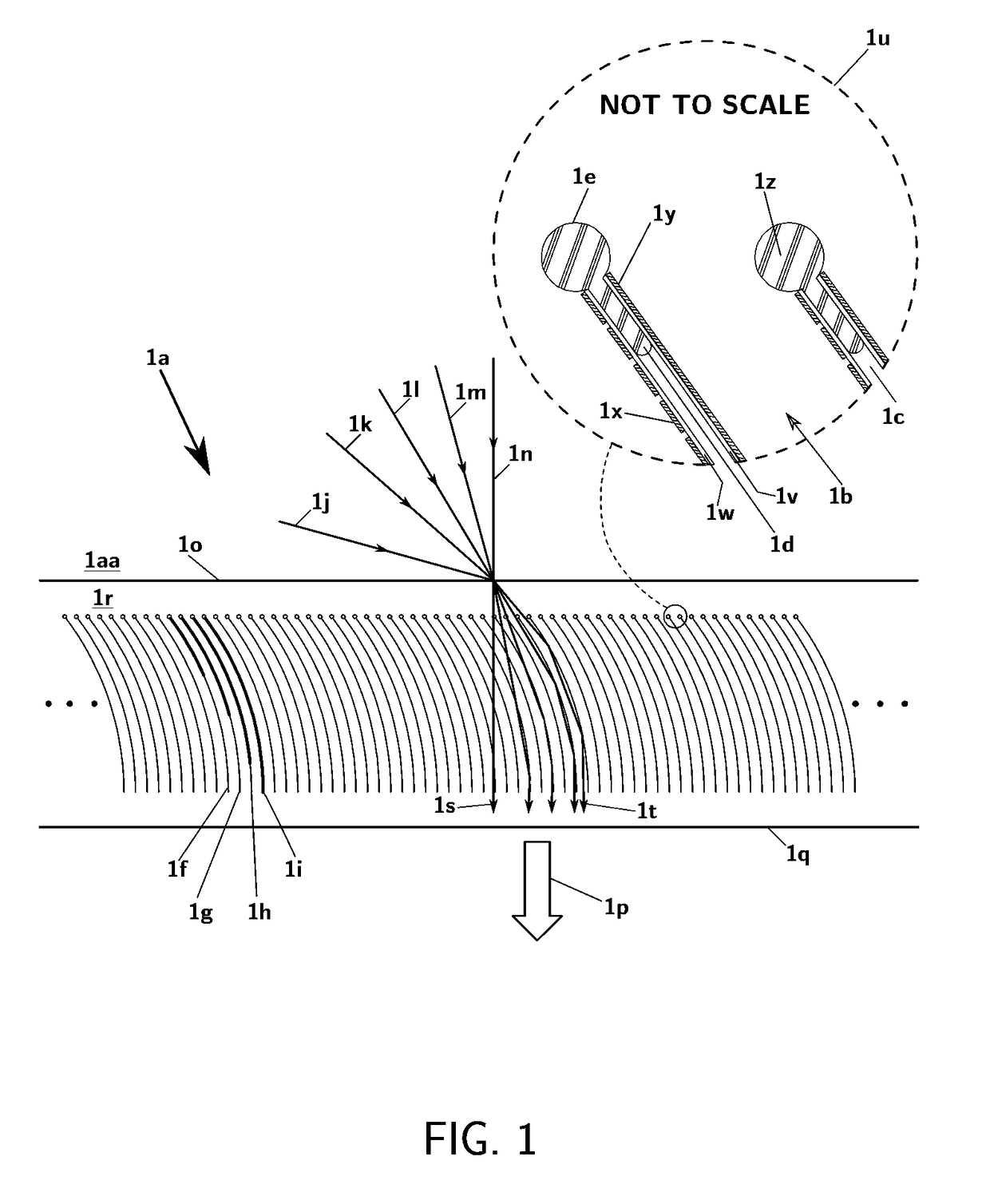Wide angle, broad-band, polarization independent beam steering and concentration of wave energy utilizing electronically controlled soft matter
a technology of electronic control and wave energy, applied in the direction of instruments, lighting and heating apparatus, optical elements, etc., can solve the problems of prone to wear, limited range of angles over which light can be steered, and potential too costly for some applications, etc., to achieve high angular steering precision and accuracy, large angular steering range, and low loss
- Summary
- Abstract
- Description
- Claims
- Application Information
AI Technical Summary
Benefits of technology
Problems solved by technology
Method used
Image
Examples
first embodiment
[0089]FIG. 6 provides a SPBS device. In particular, a non-fluid soft transparent medium 6a has and array of control channels formed into it. Two examples of these control channels are shown as 6b and 6c. A portion of these control channels is clamped together by electrostatic forces that stretch the medium into a closed configuration and another portion remains unclamped due to a lack of electrostatic forces.
[0090]In particular, control channel 6b has a normally open segment 6d (shown as a dashed curve) that is shown as a closed segment 6e in this figure. The normally open segment is closed by means of voltages that are placed on electrode pairs that run parallel to the control channel 6b, which form an Electrostatic Zipper (EZ). An example of a transparent electrode pair is 6f and 6g. The sign of the voltages is indicated by “+” and “−” signs in FIG. 6 and those electrodes without any sign indication have the same voltage, which is typically zero volts. Control channel 6b has open ...
second embodiment
[0164]To affect the unrolling of a solid cylindrical preform into a slab preform a first distributed particle beam 33h, in the form of a sheet of energetic particles from a first distributed accelerator 33i slices a slab from the rotating cylinder along an internal separation line 33j. In a second embodiment a second distributed accelerator 33k provides a second distributed beam 32m of particles in a sheet, which may be used to form features in the unrolled preform. Again, as in the situation of FIG. 32 the system in FIG. 33 may require that the output slab is annealed to reduce internal stresses after the control channels are formed.
[0165]There also other forms of manufacture. For example the use of 3D printing, such as but not limited to Large Area Projection Micro Stereolithography (LAPμSL), can provide small micron-scale features over meters of area and up to a few tens of millimeters thickness or more.
[0166]The following paragraphs provide some additional disclosures for applic...
PUM
| Property | Measurement | Unit |
|---|---|---|
| degree of freedom | aaaaa | aaaaa |
| degree of freedom | aaaaa | aaaaa |
| dynamic viscosity | aaaaa | aaaaa |
Abstract
Description
Claims
Application Information
 Login to View More
Login to View More - R&D
- Intellectual Property
- Life Sciences
- Materials
- Tech Scout
- Unparalleled Data Quality
- Higher Quality Content
- 60% Fewer Hallucinations
Browse by: Latest US Patents, China's latest patents, Technical Efficacy Thesaurus, Application Domain, Technology Topic, Popular Technical Reports.
© 2025 PatSnap. All rights reserved.Legal|Privacy policy|Modern Slavery Act Transparency Statement|Sitemap|About US| Contact US: help@patsnap.com



